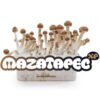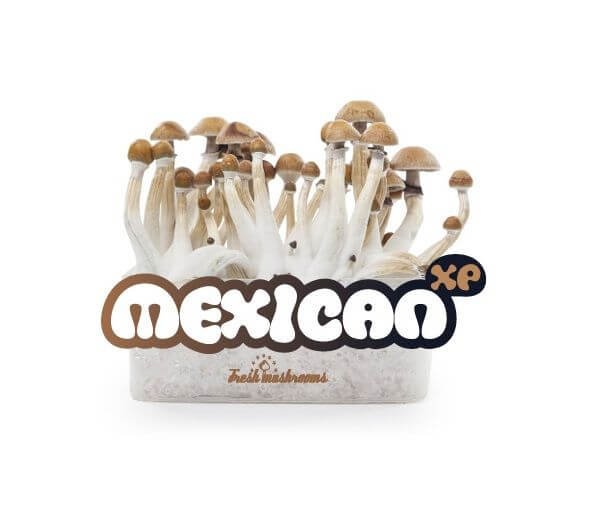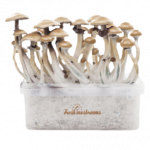mexican mushrooms
$45.50
Learn about Mexican mushrooms, including their cultural significance, historical use, effects, and modern therapeutic potential. Explore how Psilocybe mexicana has influenced spirituality and healing for centuries.
Mexican Mushrooms
Mexican mushrooms, particularly Psilocybe mexicana, are deeply rooted in the culture and traditions of indigenous peoples in Mexico. These mushrooms, known for their psychoactive properties, have played a central role in religious ceremonies for thousands of years. In this article, we will explore the history, traditional uses, and effects of Mexican mushrooms, with a focus on their cultural significance and potential modern-day applications.
1. What Are Mexican Mushrooms?
Mexican mushrooms refer to a group of naturally occurring fungi, with Psilocybe mexicana being the most well-known species. These mushrooms contain psilocybin, a naturally occurring compound that induces altered states of consciousness, including hallucinations and heightened perception.
Key Features of Mexican Mushrooms:
- Active Compound: Psilocybin is the primary psychoactive component responsible for the mind-altering effects.
- Traditional Use: Mexican mushrooms have been used in shamanic rituals for healing, spiritual growth, and connecting with the divine.
- Visual Appearance: Psilocybe mexicana typically has a small cap, with a yellowish-brown to caramel color, and grows in warm, subtropical climates.
2. Historical and Cultural Significance
Mexican mushrooms have a long history of use among indigenous groups, particularly the Mazatec, Zapotec, and Mixtec people. These mushrooms were called “teonanácatl,” which translates to “flesh of the gods,” highlighting their perceived divine properties.
a. Ancient Ceremonies
Mushrooms were central to ancient rituals aimed at communicating with the spirit world. These ceremonies, often led by shamans, involved ingesting mushrooms to enter a trance-like state, during which participants sought guidance, healing, and insight. The psychoactive effects of Psilocybe mushrooms were believed to open the mind to otherworldly knowledge.
b. Rediscovery in the 20th Century
Though mushroom use was suppressed after Spanish colonization, these traditions persisted in remote areas. In the 1950s, the famous ethnomycologist R. Gordon Wasson traveled to Mexico and participated in a Mazatec mushroom ceremony. His experiences helped introduce the world to these “magic mushrooms,” sparking global interest in their use.
3. Effects of Mexican Mushrooms
The psychoactive effects of Mexican mushrooms are primarily due to psilocybin. When consumed, psilocybin is converted to psilocin, which interacts with serotonin receptors in the brain, leading to altered perception, mood, and cognition.
a. Common Effects
- Visual and Auditory Hallucinations: Colors may appear more vivid, and patterns can seem to shift or move. Auditory hallucinations, such as hearing enhanced or distorted sounds, are also common.
- Heightened Emotions: Users often report feelings of euphoria, deep introspection, or emotional breakthroughs. Psilocybin is known for its ability to bring repressed emotions to the surface, promoting self-exploration.
- Altered Sense of Time: Time can seem to slow down or speed up, depending on the dose and environment.
- Spiritual Experiences: Many people who take Mexican mushrooms describe experiences of ego dissolution, where the boundary between self and the external world dissolves, leading to a profound sense of unity and interconnectedness.
b. Duration of Effects
The effects of Psilocybe mexicana mushrooms typically last between 4 and 6 hours, with the peak effects occurring about 2 hours after ingestion. Factors such as dosage, individual body chemistry, and mental state can influence the intensity and duration of the experience.
4. How to Use Mexican Mushrooms Safely
For those considering using Mexican mushrooms, it is essential to approach them with caution and respect. Although these mushrooms have been used safely for centuries, modern users should be mindful of the dosage, setting, and their mental health when consuming psilocybin.
a. Dosage
Dosage is a critical factor in determining the effects of Mexican mushrooms. A low dose of 1-2 grams of dried mushrooms may result in mild effects, such as enhanced creativity and subtle visual distortions, while higher doses of 3.5 grams or more can lead to intense hallucinations and deep spiritual experiences. Beginners are advised to start with a lower dose and gradually increase as they become more familiar with the effects.
b. Set and Setting
The environment and mental state (“set and setting”) in which mushrooms are consumed play a significant role in shaping the experience. A calm, safe environment, free from distractions or stressors, is ideal for mushroom use. Many users prefer to have a trusted friend present as a “trip sitter” to provide support and guidance during the experience.
c. Mental Health Considerations
While psilocybin has shown promise in therapeutic settings, those with a history of mental health conditions, particularly anxiety, schizophrenia, or psychosis, should approach mushrooms with caution. Psilocybin can amplify emotions, and in some cases, may trigger negative psychological effects.
5. Modern Research and Therapeutic Potential
In recent years, there has been a resurgence of interest in psilocybin for therapeutic purposes. Several studies have explored the potential benefits of psilocybin mushrooms for treating conditions such as depression, anxiety, PTSD, and substance addiction.
a. Psilocybin and Depression
Research has shown that psilocybin can have a profound impact on depression, particularly in individuals with treatment-resistant depression. Psilocybin appears to “reset” certain neural circuits in the brain, leading to lasting improvements in mood and cognitive function.
b. PTSD and Anxiety
In clinical settings, psilocybin has been used to help individuals process trauma and reduce symptoms of PTSD. By altering perception and dissolving ego boundaries, psilocybin can help patients view their trauma from a new perspective, leading to healing and resolution.
c. Addiction Treatment
Psilocybin has shown promise in helping individuals overcome addiction, particularly to nicotine and alcohol. By promoting deep introspection and emotional breakthroughs, psilocybin can help individuals address the root causes of their addiction and make meaningful changes in their behavior.
6. Legal Status of Mexican Mushrooms
The legality of Mexican mushrooms varies widely around the world. In most countries, psilocybin containing mushrooms are classified as controlled substances and are illegal to possess, cultivate, or use. However, some regions have moved towards decriminalizing or even legalizing the use of psilocybin for therapeutic purposes.
a. Countries Where Psilocybin Is Legal or Decriminalized
In some countries, such as Jamaica and Brazil, psilocybin mushrooms are legal and can be freely used and cultivated. Additionally, cities like Denver, Colorado, and Oakland, California, have decriminalized the possession and use of psilocybin mushrooms, allowing users to consume them without the fear of prosecution.
b. Psilocybin in Therapeutic Settings
In recent years, clinical trials using psilocybin to treat mental health conditions have gained traction, and in some cases, governments are allowing regulated use. For instance, Oregon became the first U.S. state to legalize psilocybin therapy in 2020, offering it under professional supervision.
Conclusion
Mexican mushrooms, particularly Psilocybe mexicana, hold a special place in both ancient and modern cultures. Revered for their psychoactive properties, these mushrooms have been used for spiritual and healing purposes for centuries. Today, they are being studied for their potential therapeutic benefits in mental health treatment. Whether you are interested in their historical use or modern applications, Mexican mushrooms offer a unique and powerful tool for exploring consciousness and promoting personal growth.
By understanding their effects, uses, and cultural significance, you can approach Mexican mushrooms with the respect and care they deserve.
Be the first to review “mexican mushrooms” Cancel reply
Related products
Magic Mushroom Grow Kits
Magic Mushroom Grow Kits
Magic Mushroom Grow Kits
Magic Mushroom Grow Kits
Magic Mushroom Grow Kits
Magic Mushroom Grow Kits
Magic Mushroom Grow Kits
Magic Mushroom Grow Kits




















Reviews
There are no reviews yet.